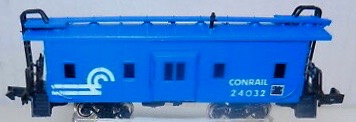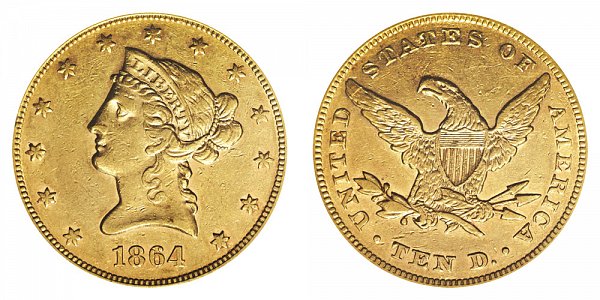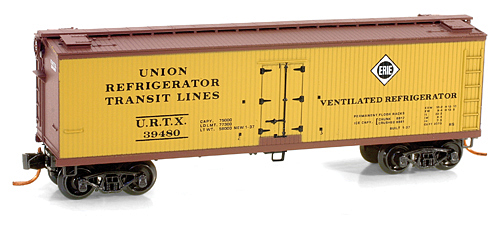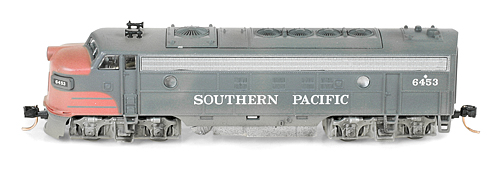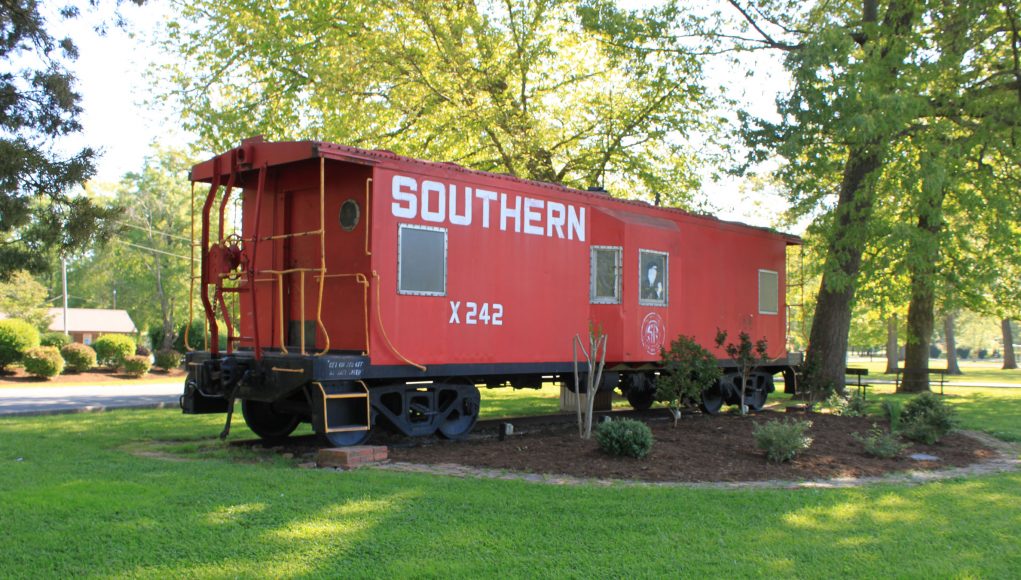Con-Cor - 0001-125304 - Caboose, Bay Window - Conrail - 24032
| Stock Number | 0001-125304 |
| Original Retail Price | $7.49 |
| Brand | Con-Cor |
| Manufacturer | Con-Cor |
| Body Style | Con-Cor Caboose Bay Window |
| Prototype Vehicle | Caboose, Bay Window (Details) |
| Road or Company Name | Conrail (Details) |
| Reporting Marks | CR |
| Road or Reporting Number | 24032 |
| Paint Color(s) | Blue |
| Print Color(s) | White |
| Coupler Type | Rapido Hook |
| Coupler Mount | Body-Mount |
| Wheel Type | Nickel-Silver Plated Metal |
| Wheel Profile | Deep Flange |
| Item Category | Rolling Stock (Freight) |
| Model Type | Caboose |
| Model Subtype | Bay Window |
| Model Variety | Window Sides |
| Prototype Region | North America |
| Prototype Era | NA Era II: Late Steam (1901 - 1938) |
| Scale | 1/160 |
Model Information:
Originally produced for Con-Cor by Kato in the 1960s, this is one of the original Con-Cor releases. Likely the tooling was moved from Japan to the US facility by Con-Cor in the 1980s, one can expect that the early cars in this series might come from either country. More recently (post-2000) this tooling has been moved to (or re-created in) China.
Prototype History:
In a bay window caboose, the crew monitoring the train sits in the middle of the car in a section of wall that projects from the side of the caboose. The windows set into these extended walls resemble architectural bay windows, so the caboose type is called a bay window caboose. This type afforded a better view of the side of the train and eliminated the falling hazard of the cupola. The bay window gained favor with many railroads because it eliminated the need for additional clearances in tunnels and overpasses. On the west coast, the Milwaukee Road and the Northern Pacifc Railway used these cars, converting over 900 roof top cabooses to bay window cabooses in the late 1930's. Milwaukee Road rib-side window cabooses are preserved at New Libson, Wisconsin, the Illinois Railway Museum, the Mt. Rainer Scenic Railroad, and Cedarburg, Wisconsin.
When the shift was made from wooden to steel caboose construction, a new type of caboose also arrived. The new caboose design replaced the traditional roof-mounted “cupola” with “bay-windows” attached to the sides of the caboose. As freight cars grew taller, the effectiveness of cupolas as practical observation points was diminished. This was especially true on lines that suffered from low clearances and were incapable of making cupolas high enough to see over the top of the tallest freight cars. Cabooses were prone to rough handling, and many a trainman was knocked out of his perch in the cupola and injured when he fell. The new caboose design was safer as well as more effective.
When the shift was made from wooden to steel caboose construction, a new type of caboose also arrived. The new caboose design replaced the traditional roof-mounted “cupola” with “bay-windows” attached to the sides of the caboose. As freight cars grew taller, the effectiveness of cupolas as practical observation points was diminished. This was especially true on lines that suffered from low clearances and were incapable of making cupolas high enough to see over the top of the tallest freight cars. Cabooses were prone to rough handling, and many a trainman was knocked out of his perch in the cupola and injured when he fell. The new caboose design was safer as well as more effective.
Road Name History:
The Consolidated Rail Corporation, commonly known as Conrail (reporting mark CR), was the primary Class I railroad in the Northeast U.S. between 1976 and 1999. Conrail is a portmanteau of "consolidated" and "rail" from the name of the company.
The U.S. federal government created Conrail to take over the potentially profitable lines of multiple bankrupt carriers, including the Penn Central Transportation Company and Erie Lackawanna Railway. With the benefit of industry-wide regulatory requirements being reduced (via the 4R Act and the Staggers Act), Conrail began to turn a profit in the 1980s and was turned over to private investors in 1987. The two remaining Class I railroads in the East, CSX Transportation and the Norfolk Southern Railway (NS), agreed in 1997 to split the system approximately equally, returning rail freight competition to the Northeast by essentially undoing the 1968 merger of the Pennsylvania Railroad and New York Central Railroad that created Penn Central. Following Surface Transportation Board approval, CSX and NS took control in August 1998, and on June 1, 1999, began operating their portions of Conrail.
The U.S. federal government created Conrail to take over the potentially profitable lines of multiple bankrupt carriers, including the Penn Central Transportation Company and Erie Lackawanna Railway. With the benefit of industry-wide regulatory requirements being reduced (via the 4R Act and the Staggers Act), Conrail began to turn a profit in the 1980s and was turned over to private investors in 1987. The two remaining Class I railroads in the East, CSX Transportation and the Norfolk Southern Railway (NS), agreed in 1997 to split the system approximately equally, returning rail freight competition to the Northeast by essentially undoing the 1968 merger of the Pennsylvania Railroad and New York Central Railroad that created Penn Central. Following Surface Transportation Board approval, CSX and NS took control in August 1998, and on June 1, 1999, began operating their portions of Conrail.
Brand/Importer Information:
Con-Cor has been in business since 1962. Many things have changed over time as originally they were a complete manufacturing operation in the USA and at one time had upwards of 45 employees. They not only designed the models,but they also built their own molds, did injection molding, painting, printing and packaging on their models.
Currently, most of their manufacturing has been moved overseas and now they import 90% of their products as totally finished goods, or in finished components. They only do some incidental manufacturing today within the USA.
Important Note: The Con-Cor product numbering can be very confusing. Please see here in the article how to properly enter Con-Cor stock numbers in the TroveStar database.
Currently, most of their manufacturing has been moved overseas and now they import 90% of their products as totally finished goods, or in finished components. They only do some incidental manufacturing today within the USA.
Important Note: The Con-Cor product numbering can be very confusing. Please see here in the article how to properly enter Con-Cor stock numbers in the TroveStar database.
Item created by: jmentzer3
on 2020-06-04 19:49:54
Last edited by: Alain LM on 2020-11-22 11:04:44
If you see errors or missing data in this entry, please feel free to log in and edit it. Anyone with a Gmail account can log in instantly.
Last edited by: Alain LM on 2020-11-22 11:04:44
If you see errors or missing data in this entry, please feel free to log in and edit it. Anyone with a Gmail account can log in instantly.


